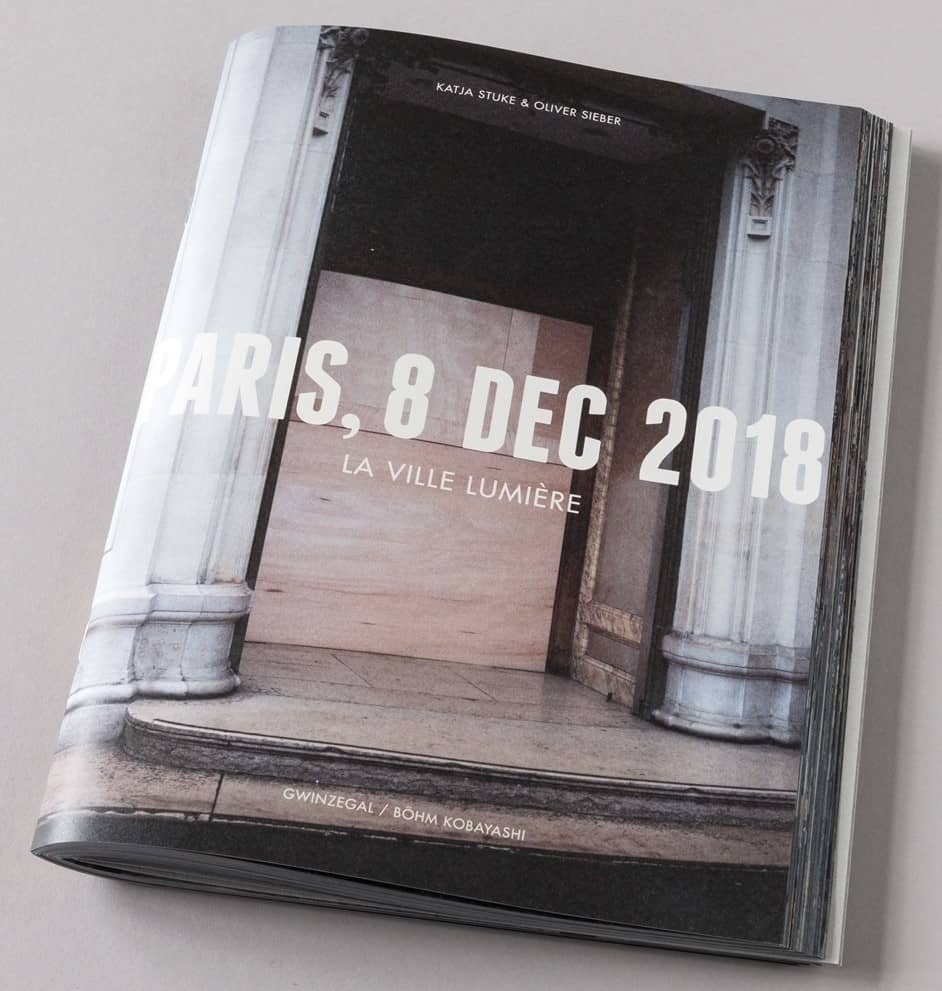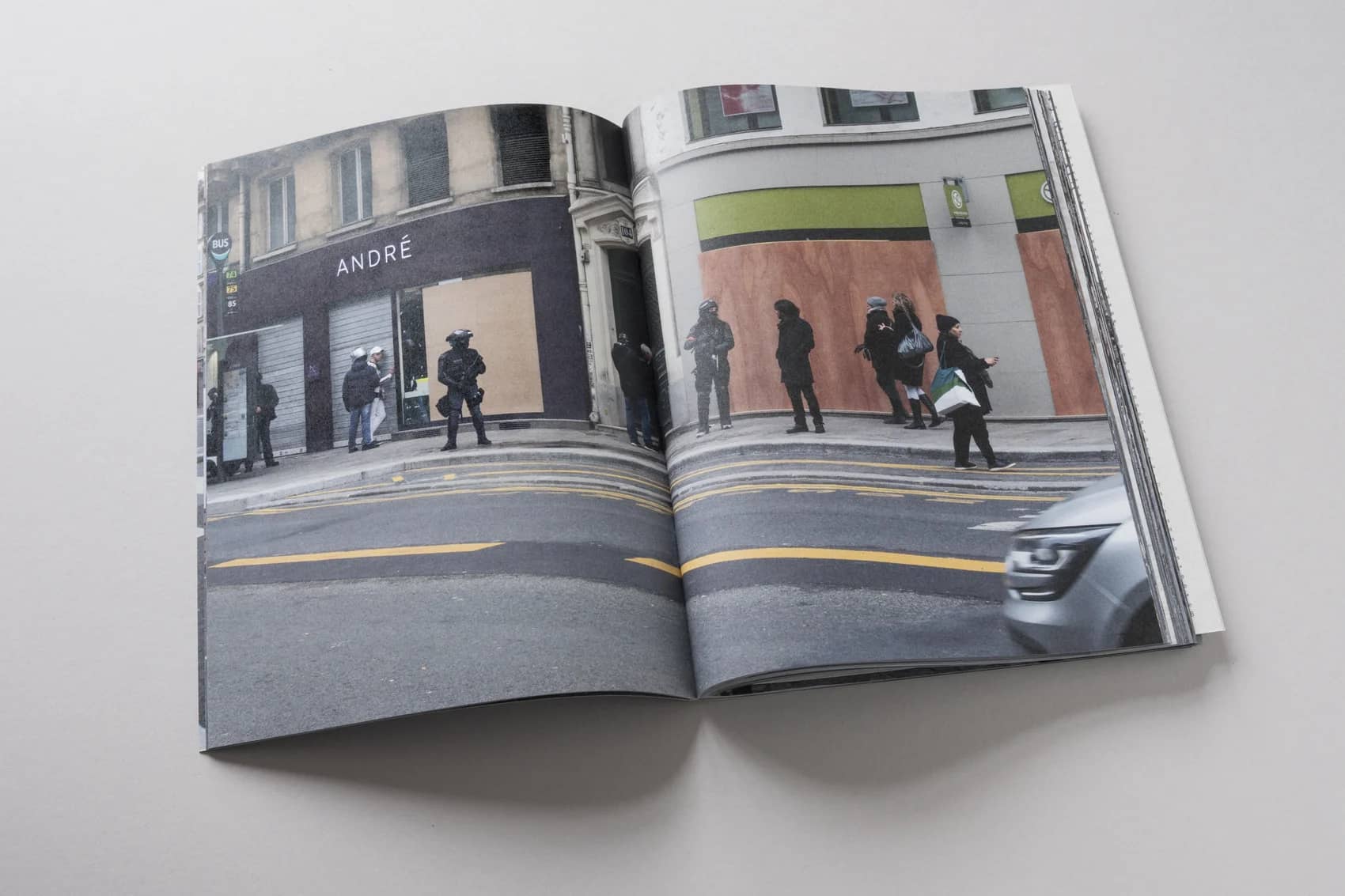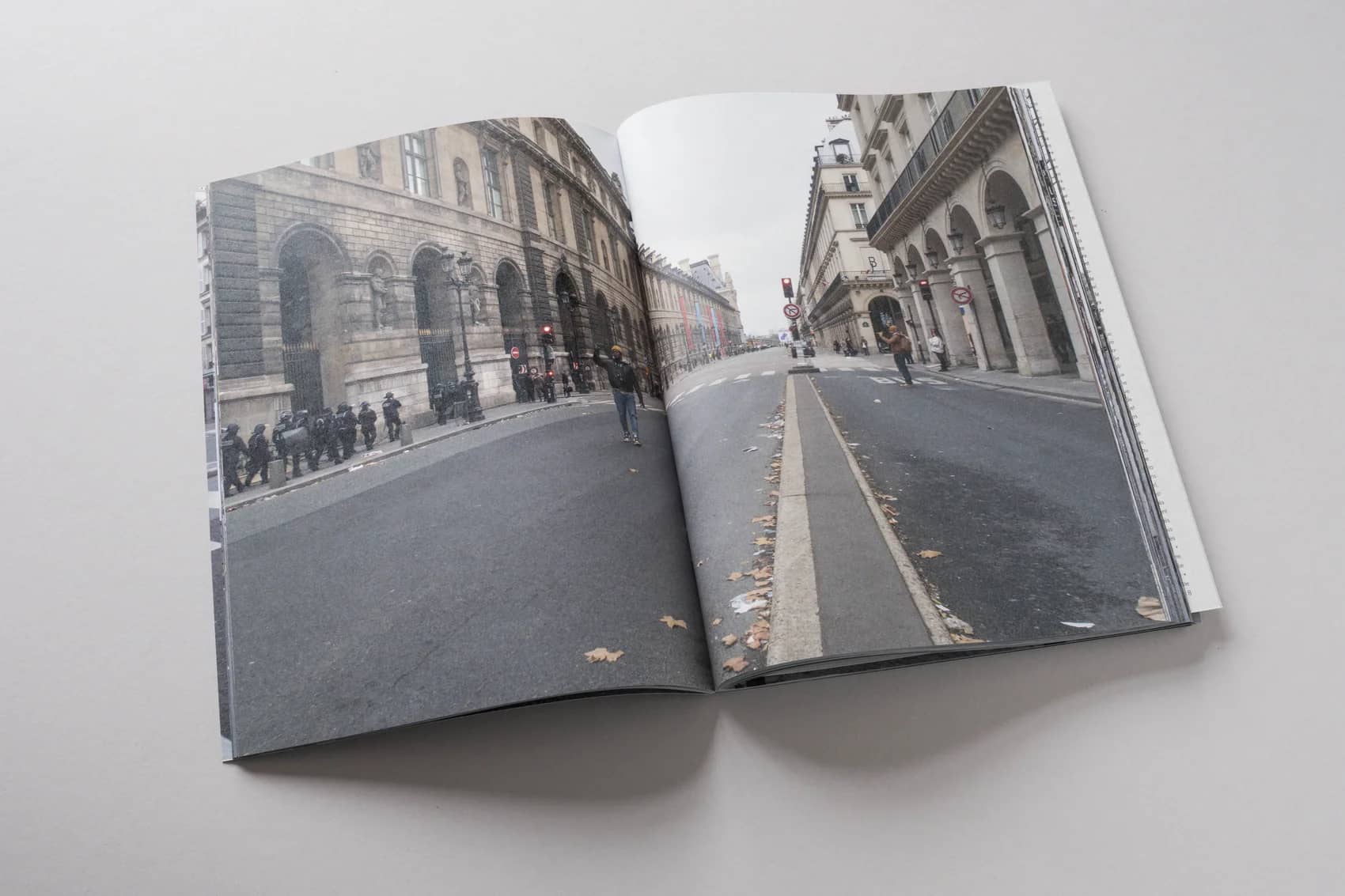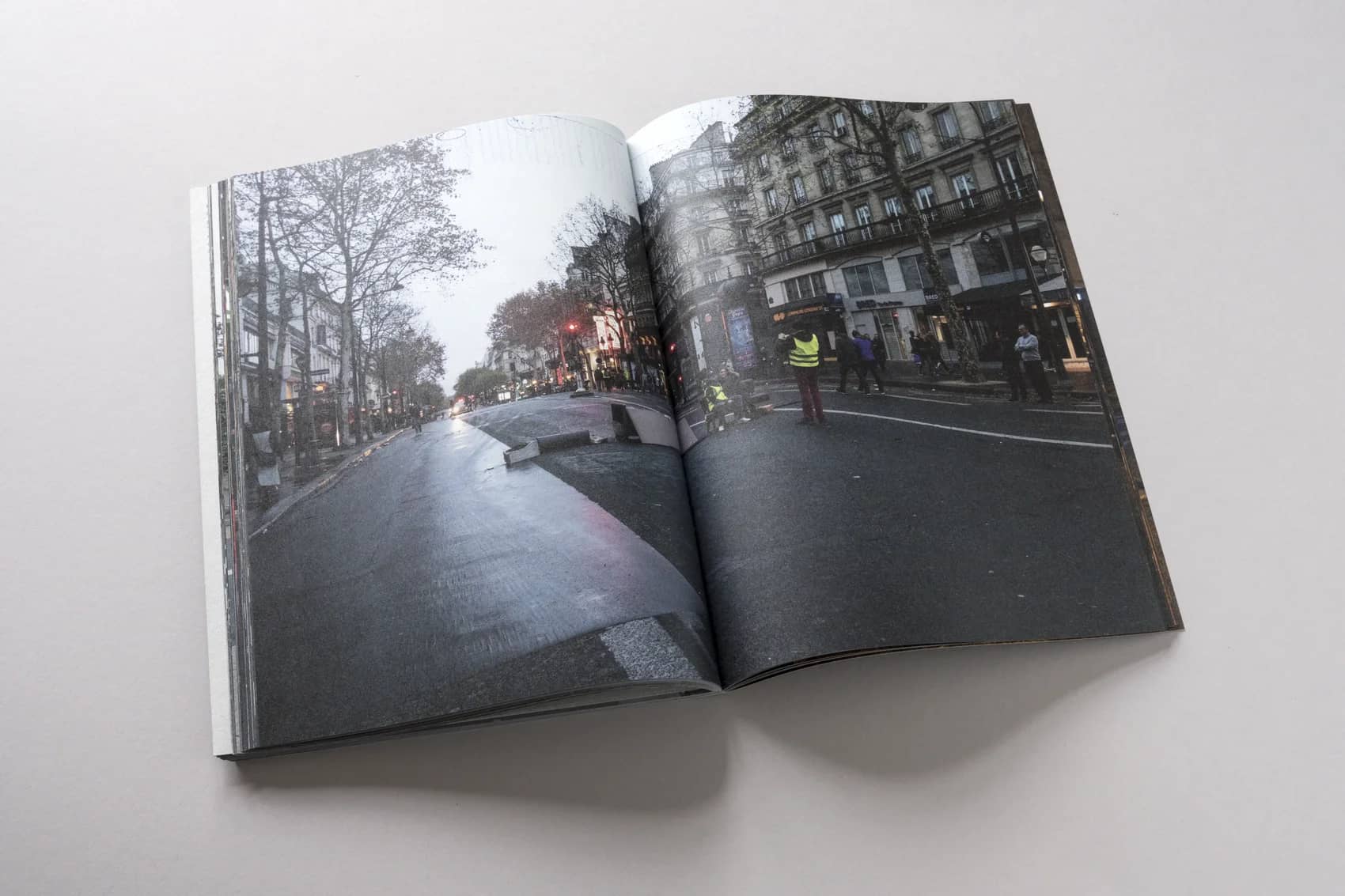La Ville Lumière s’inscrit dans un ensemble d’oeuvres créées depuis 2005 par Oliver Sieber et Katja Stuke. À Paris, au Japon, ou dans certaines villes d’Allemagne, par leurs marches silencieuses, les artistes cartographient et posent leur regard sur des zones urbaines sensibles soumises à des modifications urbaines et sociales profondes : construction d’un village olympique, fermeture d’usine, gentrification forcée… Dans une course effrénée vers le futur et l’illusion d’un progrès animé par les mêmes forces bien visibles de la globalisation et du libéralisme sauvage.
Le 8 décembre 2018, en résidence à Paris, ils sont confrontés aux premiers « actes » du mouvement des gilets jaunes. À distance, sans prendre parti, mais sans pour autant rester indifférents, ils observent comment ce conflit s’inscrit dans le récit de la ville. Cette marche de 113 photographies les guide de la rue de Rivoli au Louvre, de la Madeleine à la gare Saint-Lazare, du boulevard Haussmann à la place de la République et ne dépeint rien de moins, rien de plus que six heures de manifestation -un acte – d’un drame social ; texte “Barricades photogéniques ou l’absence de dialogue social” de Florian Ebner, Photos en couleurs.
[…] The Paris streets, as captured by Oliver Sieber and Katja Stuke on December 8, 2018 and entitled La Ville Lumière, are incorporated into an extended series of maps: “Cartographie dynamique” is a virtual network connecting cities in Japan, Germany, France, and China—and soon India as well—with the distinctive photographic works created in each location. Thematic filters are added into the mix, among them “Protest,” “Anarchists,” “Olympia,” “Expo,” “Love Parade,” “Z.U.S.” (Zones urbaines sensibles), and “Péripherique.” These specify some of the unique features of these cities as well as comparable structural elements that they share, which act, for the most part, as catalysts for revolutionary urbanistic developments. This network originated fifteen years ago, with Japanese Lesson (2005), a body of work drawn from a wide range of private and appropriated image sources that has been continually expanding ever since. Beginning as an exuberant visual grammar consisting of shots of the city, portraits, and manga, steeped in the melancholy of the already antiquated hypermodernity of Japanese “electric towns,” it afforded a more acute view of Europe’s urban structures and evolved via photographic peregrinations through the city into applied psychogeography. The organization of the “Cartographie dynamique” as a network gives the desultoriness of Sieber & Stuke’s photographic dérives new possibilities of comparison and grants their repeating structures a logical inevitability. The cartography even generates ideas for new ways of mapping urban spaces, as is evident in Sieber & Stuke’s Walk the Walk, which transposes the local route from their flat in Düsseldorf to their studio, mapping it street by street onto a new neighborhood in the twinned Chinese city of Chongqing. La Ville Lumière falls sequentially between other works that were made in Paris and the suburbs to the north of the city, such as Aulnay-sous-Bois and Aubervilliers. Caught between factory closures and imminent gentrification, these urban spaces have been turned into Zones urbaines sensibles, sensitive urban zones in which social conflicts have already vented themselves in overt violence. Even if today, in a globalized and automated world, the causes of social disruption can be attributed more and more to the invisible mechanisms of economic and political processes, they find visible expression in the physical world of our cities.






